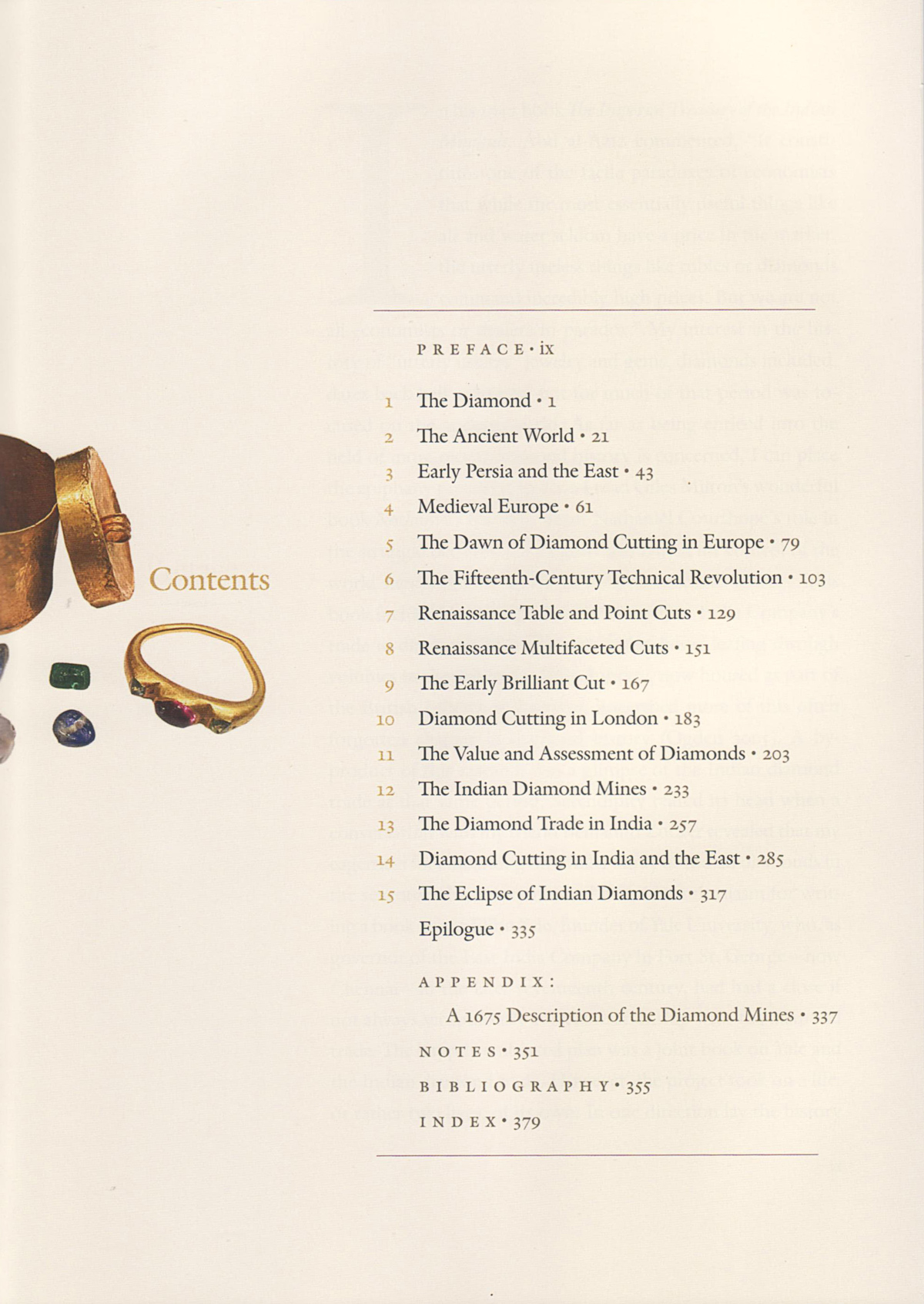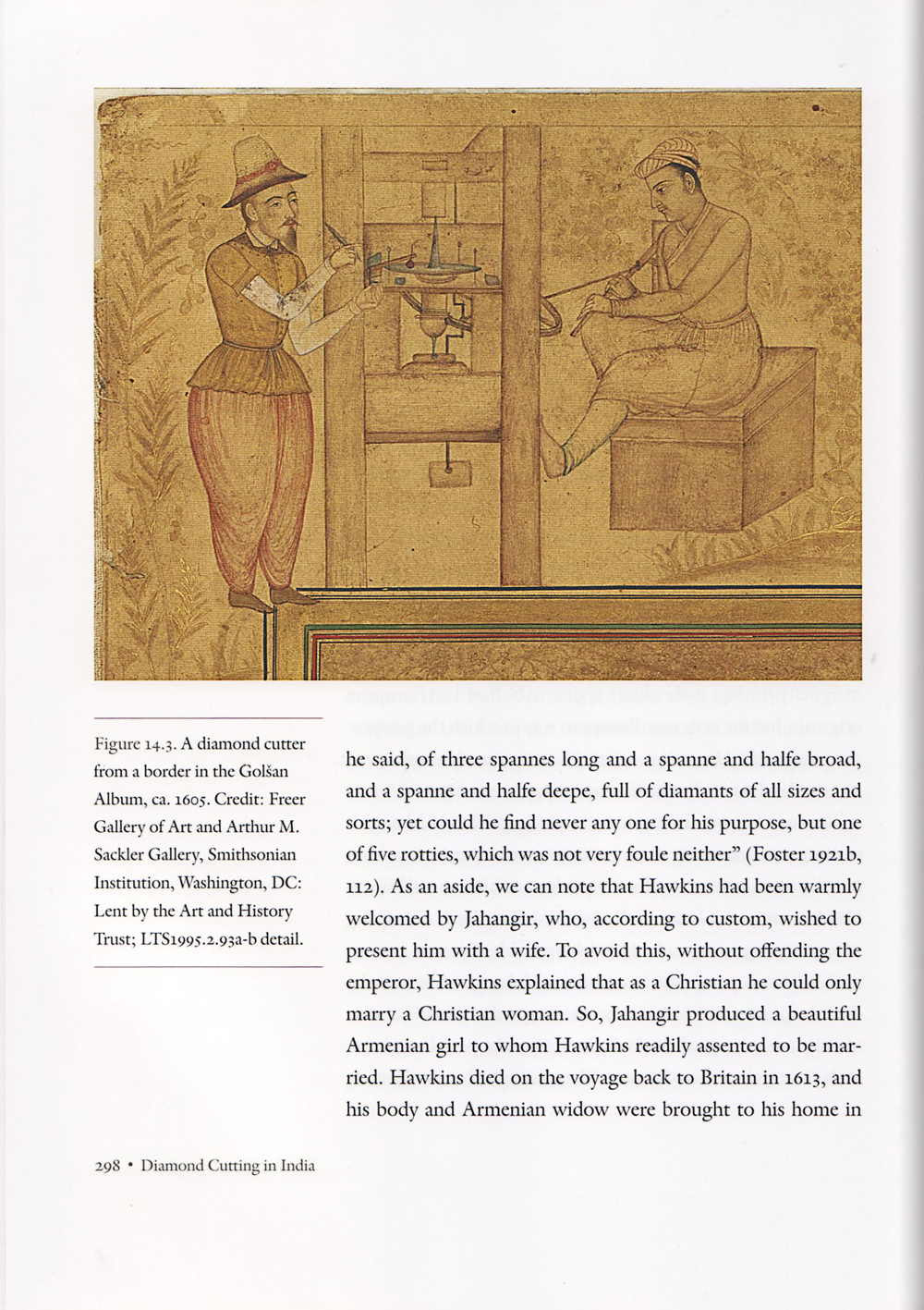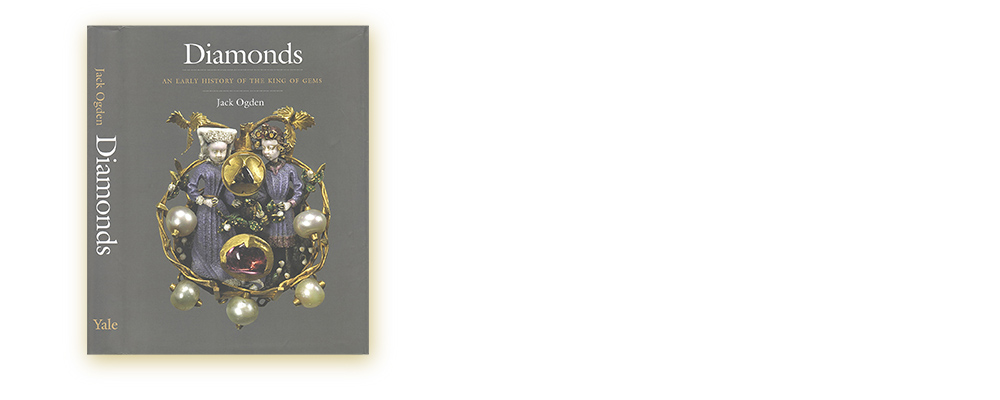Diamond: An Early History of the King of Gems by Jack Ogden, 2018. Yale University Press, New Haven and London, www.yalebooks.com/www.yalebooks.co.uk, 388 pages, illus., ISBN 978-0-300-21566-3. $40 hardcover.
If I had to pick an author to pen the history of any gem, it would probably be Jack Ogden. Thus, when I first learned of this book, I was extremely excited to get my hands on a copy and – when I did – was not disappointed.
First let me explain that this work is not a celebration of diamond. There are a half-dozen other books that have played that role, including many glossy coffee-table volumes such as Diamonds – Myth, Magic and Reality (Maillard, 1988) and most recently, Diamonds (Gordon, 2008). It is also not a compilation of details regarding major diamonds. While the reader will learn a lot about such stones, it is not meant to be a replacement for Ian Balfour's Famous Diamonds (1987). Nor is it a history of diamond mining, such as Williams' History of the Diamond Mines of South Africa (1902, 1906).
Instead what you get is a hard-nosed look at the history of this extraordinary gem, written by someone at the top of his game. Ogden has worn many hats in a multi-faceted career. Born into a jeweler's family, he was for many years Secretary General of CIBJO, and then CEO of the Gem-A. But Ogden's true strength is an historian.
 Table of Contents of Diamonds: An Early History of the King of Gems by Jack Ogden. Click on the image for a larger version.
Table of Contents of Diamonds: An Early History of the King of Gems by Jack Ogden. Click on the image for a larger version.
Do not expect breezy text. Similar to other Yale University Press volumes on gems (Lane, 2010), Ogden's Diamonds is an historian's history of the subject. This means incredible detail, full referencing, painstaking dedication to burrowing deep into a subject from various directions – all towards the goal of creating a better understanding of diamond and its history, from early times up until the discovery of diamonds in Brazil in the 1700s. At this, the book succeeds in splendid fashion.
All of the major personalities that have had a hand in the history of diamond are here, from Alexander through Pliny, al Biruni and on to Tavernier and dozens of others. While diamond trading from East to West occupies a major section of the book, there is also what arguably represents the finest description of the development of diamond cutting extant.
Despite a somewhat dry subject matter, Ogden does include occasional nuggets of humor. On page 68 he writes:
"…there was a useful test for a wife's faithfulness: 'if any man put a Diamond under the head of a woman sleeping, she manifesteth if she be an adulterer, for if she be so, she leapeth back out of bed afraid, and if not, she embraceth her husband with great love'…. Such a test would have been cruel to report if suspicious husbands had no access to such stones."
Not exactly a testimonial for diamond being a girl's best friend, but of course that tagline came centuries later.
Similarly, on page 172, Ogden writes:
"The Scottish scientist Sir David Brewster even went so far as to state that 'the brilliant form was invented in England'. Rare praise from a Scot."
 Figure 14.3, A diamond cutter from a border in the Golian Album, ca. 1605. This extraordinary illustration shows what appears to be a European (left), alongside an Indian lapidary, and is one of the first illustrations of diamond cutting tools. Looking closely, we can see that this is the blueprint for not just diamond faceting tools today, but also those that were later copied by Thailand's lapidary industry. Ogden examines the history of diamond cutting in detail, providing what is – in this reviewer's opinion – the best account to date. Click on the image for a larger version.
Figure 14.3, A diamond cutter from a border in the Golian Album, ca. 1605. This extraordinary illustration shows what appears to be a European (left), alongside an Indian lapidary, and is one of the first illustrations of diamond cutting tools. Looking closely, we can see that this is the blueprint for not just diamond faceting tools today, but also those that were later copied by Thailand's lapidary industry. Ogden examines the history of diamond cutting in detail, providing what is – in this reviewer's opinion – the best account to date. Click on the image for a larger version.
Jack Ogden's Diamonds: An Early History of the King of Gems succeeds mightily in its stated purpose, plugging what was previously a large gap in the literature on this important precious stone. Highly recommended.
References
- Balfour, I. (1987) Famous Diamonds. London, Collins, 224 pp.
- Gordon, C. (2008) Diamonds: The Quest from Solid Rock to the Magic of Diamonds. Antwerp, Tectum Publishers, 432 pp.
- Lane, K. (2010) Colour of Paradise: The Emerald in the Age of Gunpowder. New Haven and London, Yale University Press, 280 pp.
- Maillard, R., ed. (1988) Diamonds: Myth, Magic, and Reality. New York, Crown Publishers, other editions published in French, German, Dutch, Japanese & Swedish, 287 pp.
- Williams, A.F. (1902) The Diamond Mines of South Africa. New York, MacMillan, xviii, 681 pp.
- Williams, A.F. (1906) The Diamond Mines of South Africa. New York, B.F. Buck and Co., 2 Vols., 2nd ed., xvii + 359, xv + 353 pp.

About the author
Richard W. Hughes is one of the world’s foremost experts on ruby and sapphire. The author of several books and over 170 articles, his writings and photographs have appeared in a diverse range of publications, and he has received numerous industry awards. Co-winner of the 2004 Edward J. Gübelin Most Valuable Article Award from Gems & Gemology magazine, the following year he was awarded a Richard T. Liddicoat Journalism Award from the American Gem Society. In 2010, he received the Antonio C. Bonanno Award for Excellence in Gemology from the Accredited Gemologists Association. The Association Française de Gemmologie (AFG) in 2013 named Richard as one of the Fifty most important figures that have shaped the history of gems since antiquity. In 2016, Richard was awarded a visiting professorship at Shanghai's Tongji University. 2017 saw the publication of Richard and his wife and daughter's Ruby & Sapphire • A Gemologist's Guide, arguably the most complete book ever published on a single gem species and the culmination of nearly four decades of work in gemology. In 2018, Richard was named Photographer of the Year by the Gem-A, recognizing his photo of a jade-trading market in China, while in 2020, he was elected to the board of directors of the Accredited Gemologists Association and was appointed to the editorial review board of Gems & Gemology and The Australian Gemmologist magazine. In 2022, Richard published Jade • A Gemologist's Guide, while 2024 brought Broken Bangle • The Blunder-Besmirched History of Jade Nomenclature.
Notes
Review first published in the Journal of The Gemmological Association of Hong Kong, 2019, Vol. 40, p. 44.

